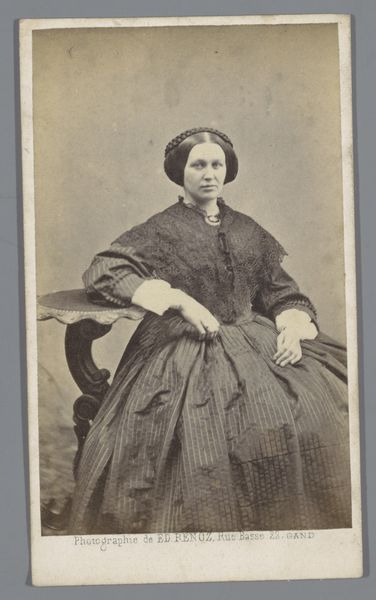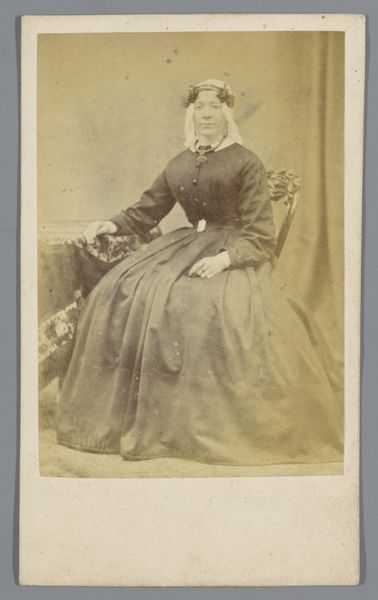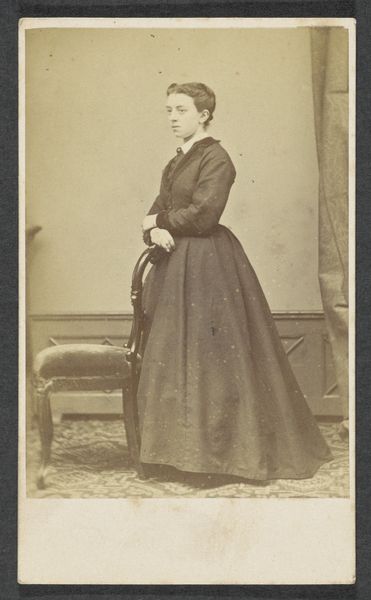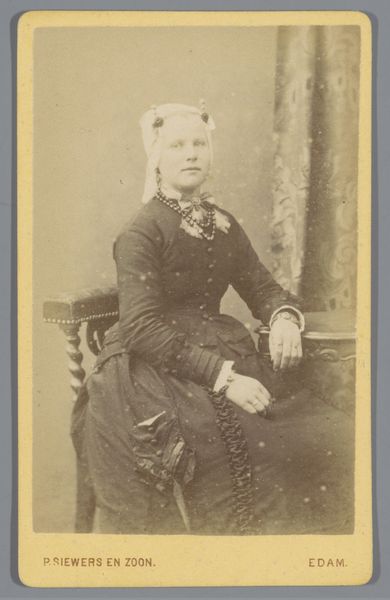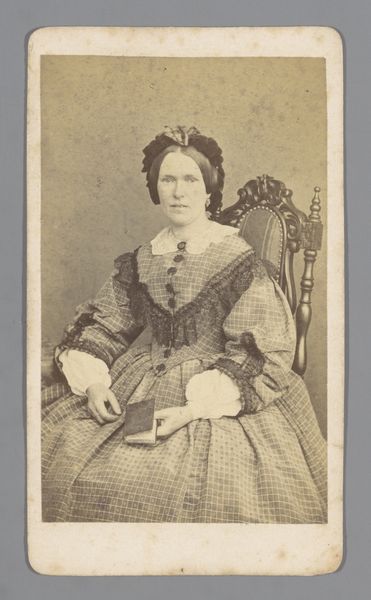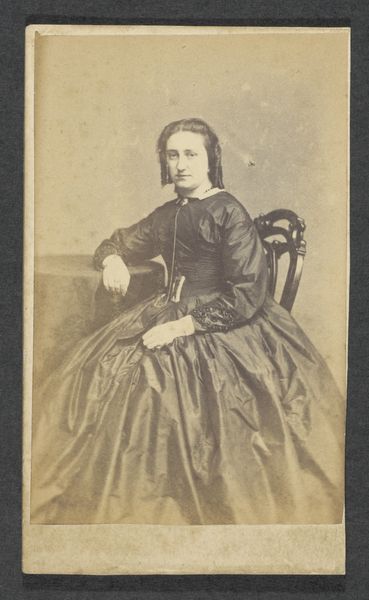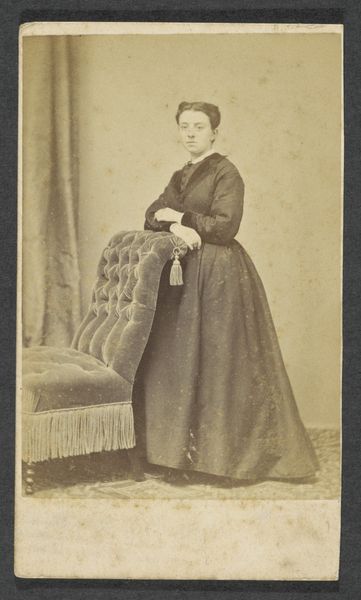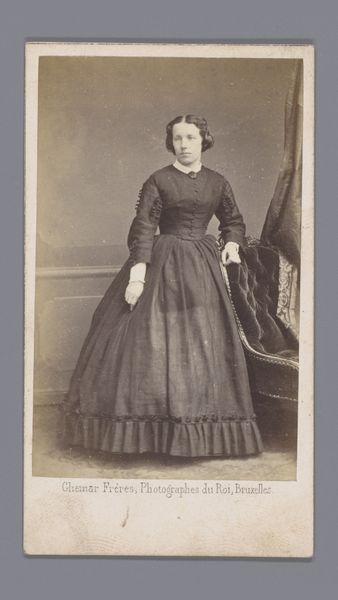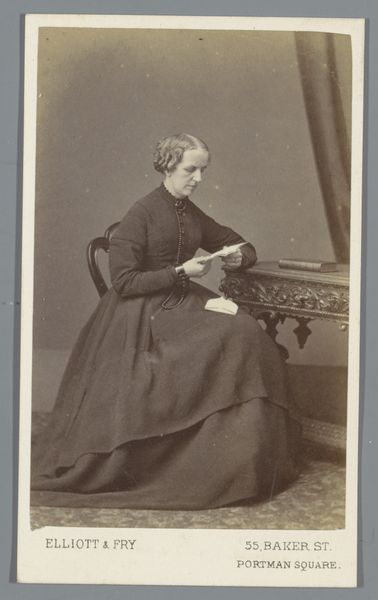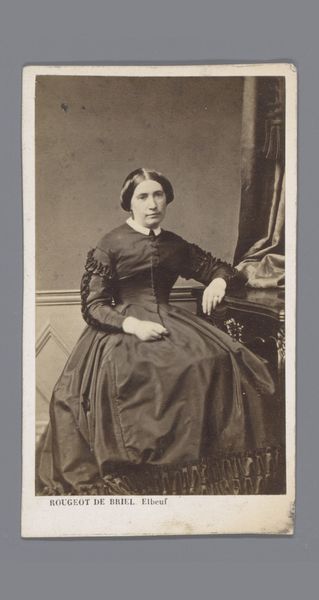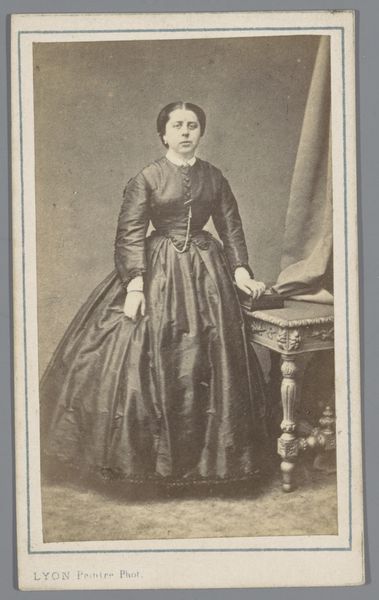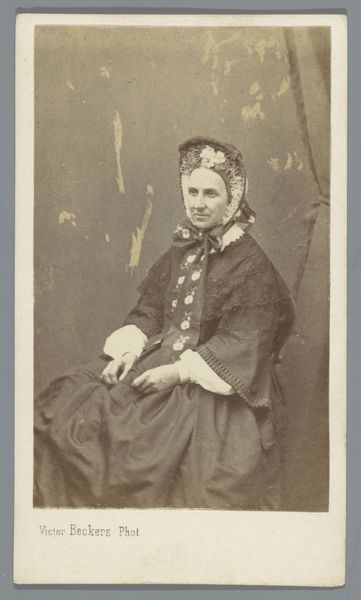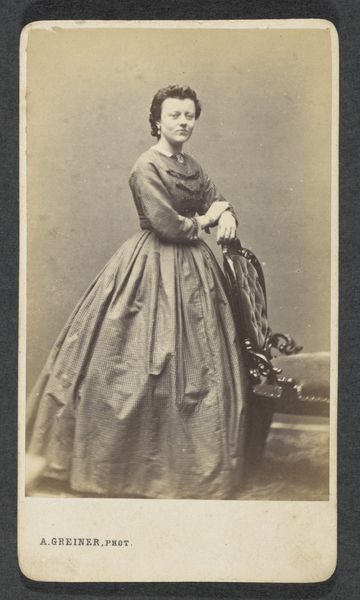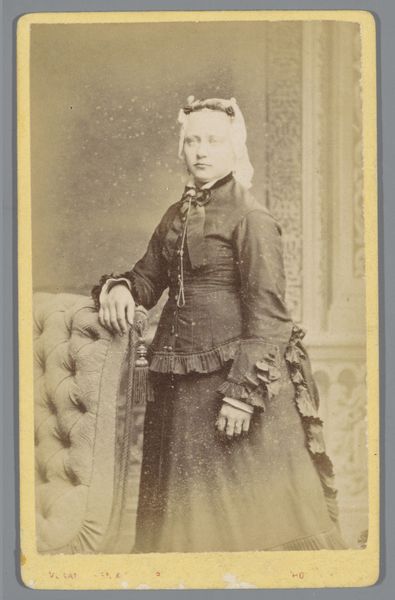
Portret van een onbekende vrouw uit de familie Marmelstein 1850 - 1900
0:00
0:00
daguerreotype, photography
#
portrait
#
self-portrait
#
daguerreotype
#
photography
#
historical fashion
#
genre-painting
Dimensions: height 105 mm, width 60 mm
Copyright: Rijks Museum: Open Domain
Curator: Before us we have "Portret van een onbekende vrouw uit de familie Marmelstein", taken sometime between 1850 and 1900 by Albert Greiner. It’s a stately daguerreotype, currently residing here at the Rijksmuseum. What strikes you most immediately? Editor: A stoic stillness. It’s as if she’s guarding a secret, sitting perfectly poised, almost daring us to unravel her story, the watch adds some complexity and ambiguity to her social class as well. There's something really haunting about these early photographic portraits, don't you think? Like gazing across a century and a half. Curator: Absolutely. These photographs provide invaluable insight into 19th-century society. Note the subject's dress—the high neckline, the tightly fitted bodice. This speaks volumes about the social expectations placed upon women of that era. A lot of garments are dark and it brings more gravity to the composition. Editor: True. And the bonnet… almost obscuring her face, yet framing it. But what gets me is that chair! Ornately carved. So theatrical. A carefully constructed setting for a carefully constructed identity. It makes me wonder how much of what we’re seeing is "real," and how much is performative. Curator: Photography during this period was an expensive endeavor, making it an event for the sitter. It would influence them to pose formally and thus consciously project an image. It’s not as much about pure realism and more about staging as it is today. Consider the impact this portrait might have had on her family; it presents not just an individual but a piece of family history to be treasured and shared through generations. Editor: Exactly! It wasn't just capturing a likeness but crafting an image to pass down. To tell a story about status, virtue, permanence. Now I’m wondering, what if we could somehow step into this picture for a day? I would love to feel what her days were like, what it felt like to inhabit those heavy garments. Curator: Indeed. As time goes on, this photograph has accumulated meanings—it has historical meaning and sentimental significance. With old portraiture there is the opportunity to recontextualize images within our understanding. I will reflect on those historical themes as I carry on through the gallery. Editor: Yes. It's as though she is still here, silently observing us as we observe her, another layer of historical understanding now etched onto that same still face.
Comments
No comments
Be the first to comment and join the conversation on the ultimate creative platform.
